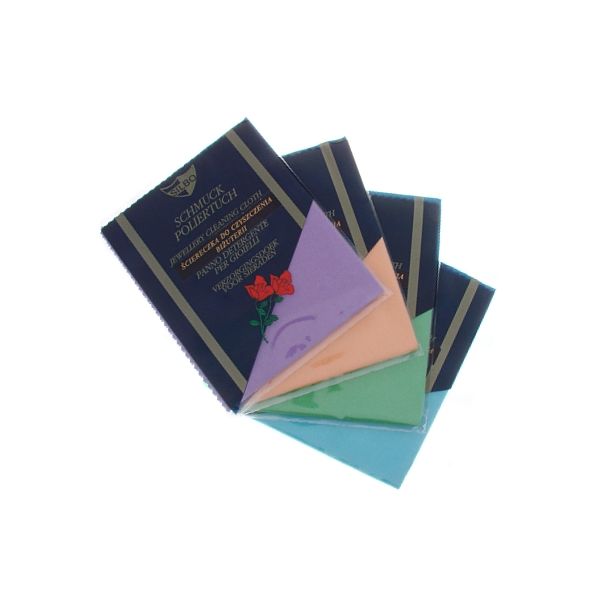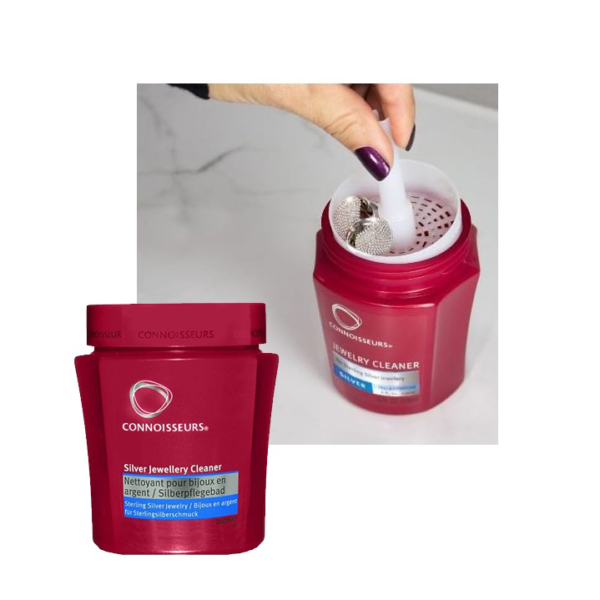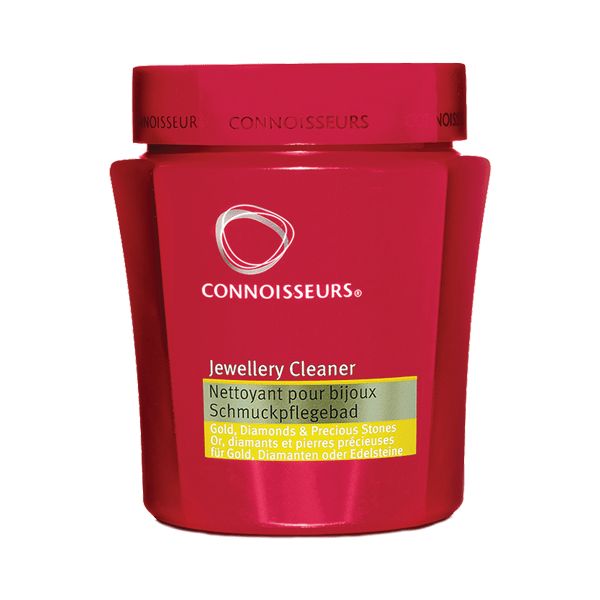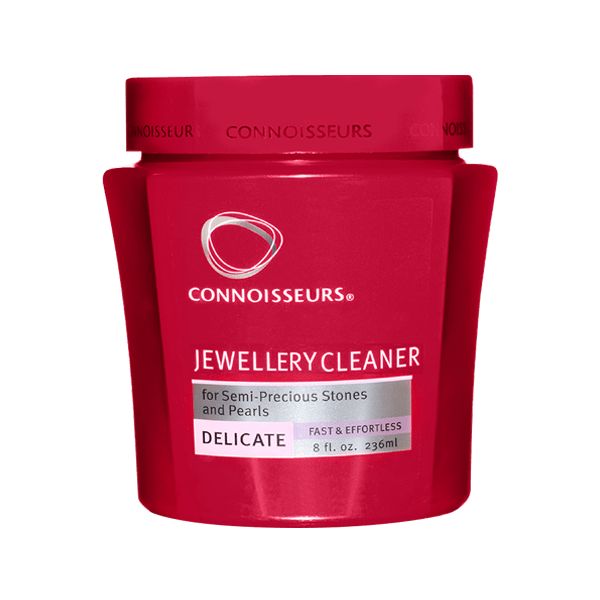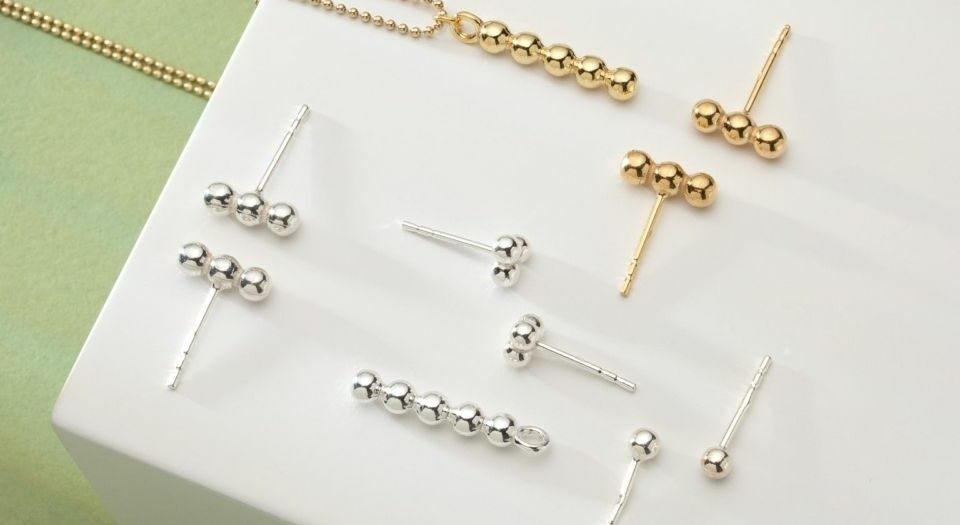- Contact us:
- +48 17 2300 400
- [email protected]
How to clean silver jewelry at home?

Sports jewelry – silver and gold findings for making jewelry for active people
March 20, 2019Update: July 3, 2022.
Silver jewellery requires special attention because it undergoes the process of oxidation. Some people think that silver gets tarnished under the influence of oxygen, but this is not true, because the dark coating is not the result of contact with oxygen, but with sulfur dioxide particles present in polluted air. In chemical reaction, silver sulfide is formed, which appears in the form of a dark layer, which makes silver jewelry dull, discolored and without a shine. It is a completely natural process, and it absolutely does not mean that we are dealing with poor quality metal. In addition to chemical processes, silver jewellery is also exposed to mechanical damage, leading to the loss of its original aesthetics. These processes cannot be avoided, but they can be significantly delayed and minimized, which is why it is so important to care of it from the first day of purchase.
If you wish your silver jewellery always look beautiful, it needs to be cared for properly, because the way we handle it has a direct impact on its appearance and durability. There are several simple treatments that we can be used every day so that you can enjoy it for a long time. In this article, you will learn how to care for silver, gold and gold plated jewelry, as well as jewelry with gemstones, pearls, crystals and cubic zirconias. We will also give you some tips on how to properly use, store and clean it to extend its life, and make it look like on the day of purchase for as long as possible. You will learn home methods of cleaning silver and quick solution products to clean gold, silver, pearls, stones and crystals, as well as the use of additional coatings to protect silver from tarnishing.
When does silver tarnish?
We have already mentioned that tarnishing silver is caused by contact with sulfur dioxide. Unfortunately, this process is natural, and we cannot completely prevent it, but there are few methods that can help delay it.
- Silver jewellery should not come into contact with detergents and cleaning substances. They contain chemical compounds that, after contact with metal, often cause its darkening. Some cleaning agents also contain micro granules that can lead to mechanical damage.
- Many people ask us: can you wear sterling silver in the shower? When taking a shower, we usually use cleaning agents such as soaps, bath lotions, salts, oils, scrubs, shampoos and conditioners. The ingredients contained in them may cause discoloration and the formation of unsightly spots on its surface, so we definitely encourage you to remove all decorations before taking a shower or bathing. However, if you nevertheless decide to bathe in jewelry, make sure to dry it thoroughly, as moisture also has a negative effect on silver jewelry.
- In addition to showering and bathing, we also recommend removing accessories before swimming in the pool, sea or thermal baths, because chlorine, salt, not to mention sulfur and other minerals, also carry a risk of tarnishing and discoloration of silver jewelry.
- Another important habit is putting on jewelry after – and not before applying cosmetics such as: body lotion, deodorant, perfume or hairspray. The varied composition of cosmetics, and the alcohol often contained in some of them, may contribute to the loss of the attractiveness of jewelry.
- Active people, training in the gym, jogging or practicing other sports activities should keep in mind that silver darkens from sweat, with which we excrete impurities that negatively affect silver items.
- Silver jewelry should also be taken off at bedtime. Especially if it is delicate and exposed to mechanical damage. For example, chains that decorate the neckline or wrists can become tangled, snagged and broken off. Earrings, both studs and ear wires, due to their location, may bend during sleep.
- In addition to the above tips, if you want your silver products to stay in their best condition for a long time, also remember to take them off before any activity that exposes them to any damage, chemical or mechanical.
-
After removing the jewelry, gently wipe it with a soft cloth and dry it if it gets wet. How to clean tarnished silver is described later in the article.
How to store silver jewelry?
Jewelry storage is another very important aspect, next to its proper use. To minimize the silver blackening, the contact of this precious metal with air should be limited due to the previously mentioned presence of sulfur dioxide in it. In addition, silver reacts badly with moisture and sunlight, so you should avoid leaving jewelry in the bathroom or on the windowsill. The safest place for silver jewelry is a dry and darkened place – away from daylight.
The best way to store jewelry is to place it in wooden jewelry boxes. Wood is a natural material that does not react with precious metals. An alternative are boxes made of other materials, but avoid metal and glass, as they may cause unwanted chemical reactions and scratch the silver items. When deciding on jewellery storage other than dedicated to jewelry, ask if they are not varnished and glued, because very often these chemicals can cause irreparable damage to jewelry. Another important element is the material lining the inside of the jewelry box. The safest are materials adapted to the storage of jewelry. Depending on the amount and type of jewelry you have, it is sometimes worth investing in jewellery organizer with compartments or hangers. By keeping silver earrings, bracelets or rings in separate compartments, you will avoid rubbing them against each other, while by hanging each silver chain on a separate hanger, you minimize the risk of tangling or even tearing them off. If you have jewelry for special occasions, we recommend storing each piece in a separate cotton bag, or wrapped in a soft cloth and placed in a string bag that protects the jewelry from air circulation.
How to store gold-plated jewelry?
We often get a question whether gold-plated silver becomes tarnished. Unfortunately, the answer is yes, but it takes place after the outer layer on the jewelry has been damaged. For this reason, it is worth knowing how to care for gold-plated jewelry. Although gold is a hard metal, flexible and resistant to oxidation in both water and air, a very thin layer of gold is applied during gold-plating process, which can wear out quickly without proper care. Gold-plated jewelry is more resistant to oxidation because it does not allow air to come into contact with silver, and it does not react to the main culprit of oxidation, which is sulfur dioxide. However, despite the additional protective layer covering silver, it is worth following the general recommendations for the proper use of jewelry, because this coating is very thin and, if not used properly, it may wear out faster and become difficult to restore shine.
Gold-plated jewelry should also be removed before cleaning, showering, bathing, getting into swimming pools, thermal baths or seas, before going to bed, sports activities and applying cosmetics. Additionally, you should pay special attention to mechanical damage caused by rubbing against other elements. For this reason, it is not recommended to wear gold-plated jewelry in the form of several rings on one finger or adjacent fingers, or several bracelets on the same wrist. If the gold layer is scratched, the jewelry will be damaged and will lose its protective properties. It is also very important to store gold-plated jewelry in a separate bag or soft cloth, and additionally in a string bag. The layer of gold does not last forever and will gradually wear off over time, however, you can slow down this process and also make it possible to re-coat with the layer of gold.
The above guidelines also apply to rhodium-plated jewelry, which, instead of gold, is covered with a layer of rhodium.
How to clean silver at home?
How to make our accessories look attractive for a long time? The answer is simple – clean it regularly. Taking them to specialized services is associated with time and costs, so it is worth trying to clean silver at home. Jewelry worn every day is exposed to dirt, grease, cosmetics and other pollutants present in the environment. Over time, the layer of dirt becomes thicker and more difficult to remove.
In the case of jewelry worn on a daily basis – gently rub it occasionally with a soft cloth, or after each wearing – in the case of jewelry that is worn occasionally. For this purpose, a jewelry cloth is best, as it is soft and does not leave fibers in the recesses of detailed decorations. The cloth is safe and comfortable to use, so it is worth using it regularly. However, when using this cleaning method, avoid stones, pearls, crystals and other materials to avoid scratching them. If tarnish is too heavy and the cloth cannot handle it, or does not allow it to reach the hollows, below we explain how to remove tarnish at home.
How to clean sterling silver?
Before cleaning silver items with a home-made method, it is worth cleaning them with dish soap warm water to remove dust and grease, as they may prevent the mixture from reacting with the metal.
- One of the most popular home remedies for cleaning silver is to use table salt in combination with aluminum foil. Using this method, line the bottom of a non-metallic bowl, preferably glass or ceramic, with aluminum foil. Dissolve the salt in warm water – the recommended ratio is 1 tablespoon of salt to 1 glass of water. Then put silver items into a bowl with DIY silver cleaner, so they touch the foil. Leave the jewelry to soak for a few hours, but check it from time to time, because in the case of slight soiling, the silver cleaning solution may remove tarnish in a few minutes. Remove jewelry from the liquid, rinse it under running cold water and buff dry with a soft cloth, preferably microfiber or flannel. Cleaning silver with foil by soaking is not recommended for jewelry with gemstones and pearls.
- How to clean silver chain? If you don’t know how to clean a silver necklace, just prepare a mixture of baking soda and vinegar. With the use of a soft toothbrush, gently scrub the chain weave along the entire length. If the chain is fragile, and you are concerned about damaging it, instead of a thick paste – prepare a mix of baking soda (1 teaspoon), vinegar (1 teaspoon) and warm water (1 liter) in a glass bowl. Soak the jewelry in this homemade silver cleaner for 15-30 minutes. After this time, rinse it under running water and wipe it with a soft polishing cloth. Cleaning silver with baking soda can also be used for other silver items, but we do not recommend it for gemstones, pearls and crystals.
- Another solution is cleaning silver with toothpaste. However, use non gel and non abrasive toothpaste, as tiny granules may scratch the surface. Cleaning silver jewelry should start from a few drops of toothpaste left for several minutes on tarnished silver. Then, with a soft toothbrush or a delicate and clean cloth, gently scrub the dirt with circular motions to remove tarnish. Finally, rinse the jewelry in warm water and buff dry with a soft cloth. We do not recommend this method for jewelry with cubic zirconia, as well as with intricate details that may make it difficult to remove the paste.
-
Above, we have listed home methods for cleaning silver, but they do not always guarantee satisfactory results. If you want to be sure that the product will work, use a professional silver cleaner. Just immerse items in it for a few seconds or gently wipe with a damp cloth to remove tarnish and restore shine of the jewelry.
How to clean gold-plated silver jewellery?
Gold-plated jewelry is covered with a gold layer that protects against blackening, but it is very thin and with time, depending on its use, it wears off. In order to delay this process and maintain its aesthetic appearance for many years, it is worth cleaning the jewelry with home-made methods from time to time. The safest way is to gently rub with a soft cloth dampened with dish soap water. In case of heavier dirt, the cloth can be soaked in a solution of table salt, baking soda and hot water. In the case of gold-plated jewelry, however, remember not to rub too much, as this may damage the top layer of gold, which is usually very thin.
How to clean gold with home methods?
Gold, unlike silver, is a metal resistant to oxidation in both water and air, but just like any other jewelry, it gets dirty. Depending on the composition of the alloy, it may also undergo discoloration caused by moisture, exposure to sunlight, as well as contact with cosmetics, detergents and chlorine. To maintain its beautiful appearance as long as possible, it is worth to clean gold products regularly. The best way to clean gold jewelry is to use a soft cotton or flannel lint free cloth, or a soft toothbrush. If the jewelry is lightly soiled, soapy water or dish soap is usually sufficient. In the case of heavier dirt, you can try cleaning methods with aluminum foil, salt and baking soda. Cleaning gold with this method consists in lining a non-metallic bowl with foil, and then pouring a mixture of salt and hot water over it, possibly with the addition of baking soda (2 teaspoons each), and placing the jewelry in it for a few hours. After soaking, rinse the jewellery under running water and buff dry. Soaking in solution is not recommended for jewelry decorated with pearls, precious stones, and especially diamonds. If the above methods do not cope with the staining of your favorite gold products – we recommend a professional gold cleaner. The product includes a convenient basket that makes it easy to clean gold. The cleaner is safe and reusable.
How to clean silver jewelry with precious stones?
Cleaning jewelry with stones requires more care, because in many cases the solution used to clean the silver may dull or discolor the stones. Gemstones and pearls are considered to be particularly sensitive to damage, but other stones can also be damaged. Home soaking methods are definitely not recommended, because the solution can dissolve the glue and also dull or discolor the stone. Tarnished silver can be cleaned with baking soda with vinegar or toothpaste, but it is best to use cotton ear buds for this purpose, avoiding precious or other stones embedded in the silver. To be sure that the accessories with stones will not be damaged, it is worth choosing a professional liquid for cleaning jewelry with precious stones gem clean, which is safe, convenient and effective.
How to clean jewelry with pearls?
Pearls, just like gemstones, are one of the most delicate jewelry ornaments and therefore require special care. Cleaning silver or gold jewelry is best done with cotton buds, avoiding decorations. If the pearls get stained, it is best to gently rub them with a dry and soft cloth. However, it should be remembered that too frequent and strong cleaning may damage its surface. In the case of heavier dirt, DIY cleaners are not recommended as they may cause dullness and discoloration of pearls. In such a situation, special liquids dedicated to cleaning pearls and gems are the solution. If you want to be sure that you use the safest way of cleaning pearls, choose proven products and choose the popular connoisseurs pearls cleaner available in our offer.
How to clean sterling silver with cubic zirconia?
Rhinestones are much more resistant than pearls and gemstones, so in the case of jewelry with cubic zirconias, you can clean it with soapy water and dish soap, as well as solutions using salt, baking soda and toothpaste. But instead of soaking, it is safer wiping with a delicate cloth soaked in the solution. If hollow rings or earrings with intricate patterns are dirty, we do not recommend cleaning them with toothpaste. In such cases, it is better to use the above-mentioned mixtures.
How to clean jewelry with crystals?
Crystals, like rhinestones, are more resistant than pearls and natural stones, so you can clean them with a water solution with soap, dish soap, as well as salt, soda and vinegar. However, soaking should be avoided as the liquid may dissolve the glue and the stone will peel off. It is recommended to clean the crystals with a soft cloth soaked in the solution, or with a soft toothbrush. In the case of greater dirt, we recommend a diamond dazzle stick from connoisseurs.
Rhodium plating jewelry as additional protection
Above, we have described a few methods of cleaning silver, gold, jewelry decorated with stones, pearls, cubic zirconia and crystals, but to prevent discoloration of the items, it is worth taking care of additional protection. For this purpose, many jewelers use rhodium-plating silver by covering it with a layer of rhodium, which makes it more resistant to tarnish and discoloration. You can learn more about this popular jewelry service in a separate article, Rhodium plating.
Rhodium plating jewelry as additional protection
Above, we have described a few methods of cleaning silver, gold, jewelry decorated with stones, pearls, cubic zirconia and crystals, but to prevent discoloration of the items, it is worth taking care of additional protection. For this purpose, many jewelers use rhodium-plating silver by covering it with a layer of rhodium, which makes it more resistant to tarnish and discoloration. You can learn more about this popular jewelry service in a separate article, Rhodium plating.
Anti-tarnish protection
Another treatment that helps to keep the shine of earrings, rings or bracelets longer is the anti-tarnish coating of the silver. This layer also protects the jewelry against oxidation, but unlike rhodium plating – it is transparent. The shade of rhodium resembles the color of silver. You can learn more about this service in the second part of the Jewelry services article.
Find out more:
- Discover a wide range of findings for making silver jewellery – silver findings wholesale
- Gold findings – find out how easily make jewellery with our products
- Rhodium plating as additional protection for silver jewellery
If you found this article valuable, we would be grateful if you like, share with others, or comment, which will be an energy booster for us to write more articles 
Follow us:
Instagram: 
Facebook: 
Youtube: 
Pinterest: 
Join to our group of jewelry makers: Making jewellery with 925CRAFT
Related posts
How to start a jewelry business – a guide for beginners
Jewelry services – electroplating silver and gold
Wire wrapping – how to make wire jewelry





